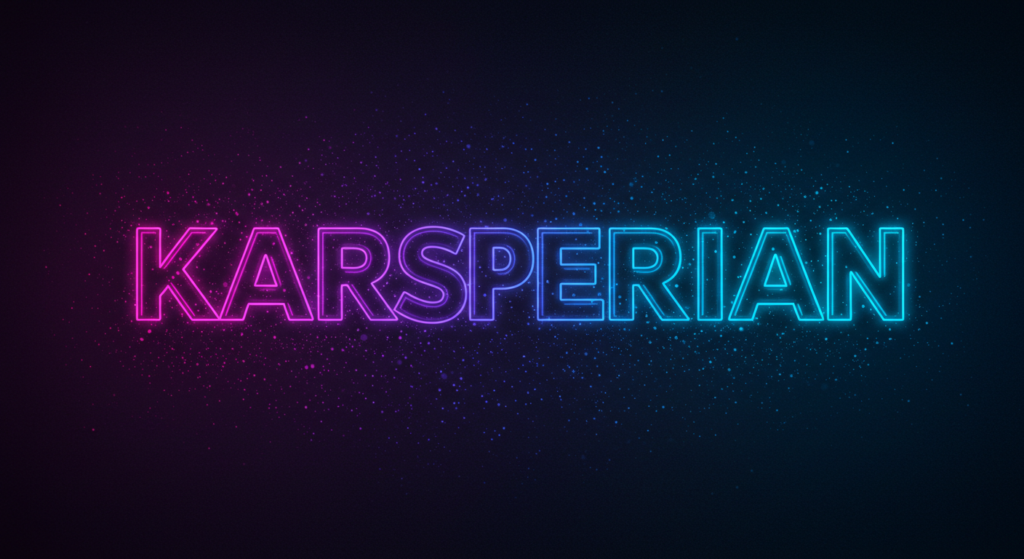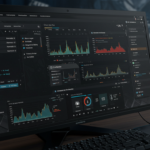Introduction
When discussing cybersecurity software, the name kárspersky often comes up as one of the most recognized global brands. Known for its antivirus programs, internet security suites, and enterprise solutions, the company has built a reputation for offering strong digital protection. In today’s digital-first world, where cyber threats evolve faster than ever, individuals and organizations alike seek reliable tools to defend sensitive data. Kárspersky positions itself as a leader in this fight, combining traditional antivirus detection with modern AI-driven threat analysis.
The relevance of kárspersky extends beyond simple antivirus solutions. It has become a comprehensive cybersecurity ecosystem that addresses malware, phishing, ransomware, and network intrusions. From small businesses looking to secure endpoints to large enterprises managing complex IT infrastructures, the brand caters to a wide audience. Yet, with increased visibility comes greater scrutiny. Some view kárspersky as a trustworthy ally against cybercrime, while others question its geopolitical connections and privacy implications. This dual perception makes it essential to explore both the benefits and controversies surrounding the software.
In this article, we will dive into kárspersky’s offerings, its key features, industry position, and the challenges it faces. By examining facts, user experiences, and security expert opinions, readers can form an informed perspective. Whether you’re a casual user protecting personal files or a company safeguarding client data, understanding the strengths and weaknesses of kárspersky will help you decide if it’s the right cybersecurity solution.
A Brief History of Kárspersky
Kárspersky was founded in 1997 by Eugene Kaspersky, a Russian cybersecurity expert who sought to create effective solutions against the rising tide of computer viruses. What started as a small company quickly grew into a global force in digital protection. By the early 2000s, kárspersky software had gained international recognition for its ability to detect emerging threats before many competitors. Its success was largely due to a strong research team dedicated to analyzing malware behavior and releasing timely updates.
Over the years, kárspersky expanded its portfolio beyond basic antivirus. The company introduced advanced internet security suites that included firewalls, parental controls, and VPN capabilities. Its enterprise division also grew rapidly, offering endpoint protection and cloud-based defenses to Fortune 500 companies. Today, kárspersky operates in over 200 countries and boasts millions of active users. Despite its accomplishments, its Russian origins have sparked debates in Western nations, creating an additional layer of complexity when evaluating its place in global cybersecurity.
Key Features That Define Kárspersky
One of the standout features of kárspersky is its multi-layered defense strategy. Instead of relying solely on signature-based detection, the software uses behavioral analysis, heuristics, and machine learning to identify suspicious activity. This approach allows it to catch zero-day threats that might otherwise slip past traditional antivirus programs. Additionally, kárspersky integrates ransomware protection by monitoring processes for encryption attempts, blocking malicious actions before they can lock down files. For everyday users, this means enhanced protection against the most common and devastating cyberattacks.
Another major strength lies in kárspersky’s user experience. Its interface is designed for simplicity, ensuring even non-technical individuals can navigate features with ease. Real-time scanning runs in the background without significantly slowing devices, while scheduled scans provide customizable options. Features like Safe Money for secure online banking and password management tools add extra layers of digital safety. Whether on Windows, macOS, Android, or iOS, kárspersky delivers consistent performance, making it one of the most versatile cybersecurity tools available today.
Advantages of Using Kárspersky
The biggest advantage of kárspersky is its high detection rate. Independent labs such as AV-Test and AV-Comparatives have consistently ranked the software among the top performers in malware identification. This reliability offers peace of mind to users who want confidence in their chosen cybersecurity solution. Furthermore, kárspersky’s low false-positive rate ensures that legitimate files and applications are not mistakenly flagged as threats. For businesses, this accuracy translates to minimal disruptions in daily operations.
Beyond detection, kárspersky is also praised for its affordability. Compared to competitors like Norton or McAfee, its pricing often provides better value for the features included. Small businesses in particular appreciate its cost-effective licensing options, which make enterprise-grade protection more accessible. Additionally, frequent software updates and a global research network help kárspersky stay ahead of cybercriminal tactics. For many users, these combined advantages create a compelling case to choose the platform over alternatives.
Controversies and Concerns Surrounding Kárspersky
Despite its technological achievements, kárspersky has not been free from controversy. The company has faced scrutiny due to its headquarters in Moscow and alleged ties to Russian intelligence agencies. In 2017, the U.S. government banned federal agencies from using kárspersky products, citing concerns over national security. This decision fueled debates about whether the ban was based on evidence or geopolitical tensions. Critics argue that such concerns create unfair disadvantages for the company, while supporters claim caution is justified in protecting sensitive government networks.
For everyday consumers, these controversies raise difficult questions about trust. While there is no publicly available proof that kárspersky misuses user data, the association with Russian jurisdiction can make some uneasy. Privacy advocates caution that any software, regardless of origin, could be compelled by government authorities to cooperate in investigations or surveillance. As a result, potential customers must weigh the risks against the product’s proven technical strengths. This debate continues to shape perceptions of kárspersky across different markets.
How Kárspersky Compares to Competitors
When comparing kárspersky with other cybersecurity providers, one noticeable factor is its strong performance-to-cost ratio. For example, Norton emphasizes identity theft protection and bundled services, while McAfee markets itself as a family-friendly option with unlimited device coverage. In contrast, kárspersky prioritizes core security features with added bonuses like VPNs and parental controls, often at a lower price point. For users who want solid protection without unnecessary extras, this makes kárspersky highly appealing.
Another aspect worth comparing is global reputation. While kárspersky ranks highly in independent testing, its controversies affect adoption in Western government and corporate environments. Competitors such as Bitdefender and Trend Micro benefit from being headquartered in countries with fewer geopolitical tensions, which can increase user trust. Still, many private individuals and businesses continue to use kárspersky due to its technical excellence. Ultimately, the decision comes down to balancing performance, trust, and specific user needs.
Future of Kárspersky in Cybersecurity
The future of kárspersky hinges on its ability to adapt to both technological and political challenges. As cyberattacks grow more sophisticated, the company continues to invest in artificial intelligence, cloud-based security, and predictive analytics. Its global research team regularly uncovers advanced persistent threats (APTs), solidifying its reputation as a thought leader in cybersecurity intelligence. These innovations ensure that the brand remains relevant despite the shifting landscape of digital threats.
However, political hurdles remain significant. To regain lost trust in certain regions, kárspersky has launched transparency initiatives, including relocating some data processing to Switzerland. By opening Transparency Centers around the world, the company allows independent experts to review its source code and practices. These steps aim to reassure governments and enterprises that the software is safe to use. Whether these efforts succeed will largely determine kárspersky’s long-term position in the cybersecurity market.
Conclusion
Kárspersky remains one of the most recognized names in cybersecurity, offering strong protection backed by years of research and innovation. Its advanced features, high detection rates, and affordability make it a competitive choice for individuals and businesses alike. Yet, the brand is not without its challenges. Geopolitical controversies and questions about trust continue to influence user decisions, especially in sensitive industries.
For everyday users, the key takeaway is balance. If you prioritize proven malware protection and value affordability, kárspersky stands as a reliable option. On the other hand, if concerns about data privacy and government influence weigh heavily, exploring alternatives may provide peace of mind. Ultimately, the decision rests on aligning personal or organizational needs with risk tolerance. As cyber threats become more complex, informed choices about security software are more important than ever. Kárspersky’s story is still unfolding, and its role in shaping the future of digital defense remains significant.







